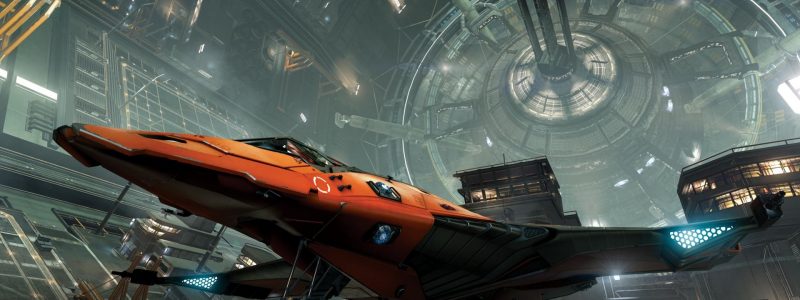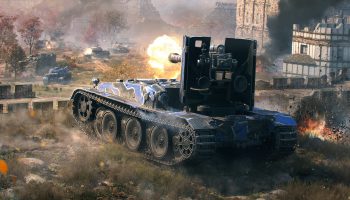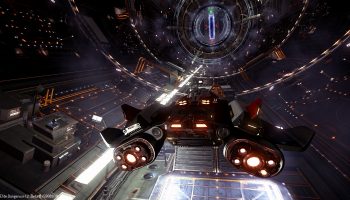Elite Dangerous comparing 5K LY trip with and without neutron highway
I have started unlocking engineers and as many of you know, some of the engineers require that you travel 5k light years away from your home system. After looking up how to use the neutron highway I hypothesized that the time it would take to use the neutron highway would not save sufficient time to make it worth the risk. So, like any good scientist, I decided to run an experiment on the difference in time using a neutron highway versus jumping normally with "default" map settings and wanted to share my findings. It should be noted that general consensus states that if you use the neutron highway you should use an external website to help you plot your route rather than the in-game route planner. I, however, am a filthy casual and didn't want to go through all that bother. Below you will find my testing mechanisms and results, looking forward to hearing your feedback.
Test
Hypothesis: The time spent supercharging fsd, repairing damage to the fsd, as well as the inherent risk involved in using the neutron highway does not save sufficient time to be worth it when compared to standard jumping.
Test parameters
Starting System: HIP 97950 (my spawn station was Chamberlain's Rest)
Ending System: Aucoths po-u a57-3 (5000.00LY)
Ship used for experiment:
(It was my intent to create a "average ship" with a balance in both jump distance as well as fuel capacity in an attempt to make this experiment as universally applicable as possible.)
Test was performed on PC using a Logitech x52 Hotas
Plot protocol
No external sites were used. No route filters (star types) were used, route settings were set to their default state, only indicating the "use jet cone boost" function under route options.
FSD injections were not used for this test.
Heatsinks were only deployed in situations of user error, they were not used to assist in jumping.
Definition of terms
CMDR- referring to myself, I will use this term in lieu to using the first person in order to mitigate confusion
Start time- defined as the CMDR already being in supercruise, throttled to zero, and facing the next jump. Start time begins as CMDR activates frame shift drive.
End time- defined as the CMDR enters witch space to enter the destination system, as the frame shift count down reaches zero (the load screen).
User error- CMDR made a mistake that a seasoned player would not, such as not staying in the jet cone long enough to accomplish "FSD supercharge" or accidently flying into the sun while orbiting.
Fuel protocol- Timer was stopped as the CMDR entered the next system while throttled to zero if fuel capacity was depleted to approximately 30%. the route was then accessed to see if a scoopable star was along the current route before fuel was depleted. If true, the map was closed and time was resumed. If false, a fuel stop occurred.
Fuel stop- defined as beginning while CMDR is throttled to zero and facing the system star, as the galaxy map button (bound) was activated, the nearest scoopable star facing away from the final destination system was targeted and jumped to (this was done in a best attempt to preserve original position as if a fuel stop never needed to occur). CMDR then fueled to full capacity then jumped back to the system where the detour occurred, throttled to zero, restored original route to final destination, closed the galaxy map, then stopped the timer.
*Time required for fuel stops or detours was calculated and reported separately so that the reader could interpret for themselves whether or not they feel it should be reported. It should also be noted that a non-tested trip using either method would involve stopping for fuel and then jumping closer to their destination rather than back to the system that they detoured from.*
Repair frame shift drive- defined as the CMDR being throttled to zero in supercruise. Time was calculated as the amount of time it took to drop from supercuise, throttle to zero, repair the frame shift drive, re-activate the frame shift drive, and then jump back into supercruise.
System protocol
Traveling from system to system was kept as consistent as possible with only slight changes in protocol depending on the type of star being traveled in.
General- CMDR would enter the system while throttled to zero prevent accidently running into the star, the throttle was then set to max while orbiting the sun around the shortest perceived route to the destination. once in line with the destination, CMDR flew straight for the destination until the "sun" icon on the map HUD turned from the color red to the color orange, which is when the frame shift drive was activated. Once the frame shift drive was fully charged and the countdown began, the throttle would be set to zero. Slight deviations from this general protocol would occur based on star type.
Non-scoopable star- performed exactly as described in "general"
scoopable star- performed as described in "general" except to throttle down during orbit to make sure that fuel capacity was full before jumping to the next system.
neutron star- CMDR would head towards the closest perceived "arm" of the neutron star. CMDR then aligned with the arm while facing away from the star, then dipped into the cone at a shallow angle. Once the frame shift drive was supercharged the CMDR exited the cone, activated the frame shift drive, aligned to next target, and jumped to the next system.
Test results
Jet cone boosted
Number of jumps: 73
Number of Neutron stars interacted with: 7
Incidents of user error: 3 amount of time wasted: approximately 20 seconds
1&2- accidently exited cone before the frameshift drive was fully charged which resulted in approximately 8 seconds of deviation to re-enter the cone, finish the supercharge, and exit per infraction
3- also accidently exited the cone but was much faster and correcting the mistake, this took approximately 4 seconds.
Frame shift drive integrity: 95%
Trip time: 1:11:21.85 (1H 11M 21.85S)
Fuel capacity at end of trip: approximately 50% (picture attached if possible)
Time to fuel to full at end of trip: 43.63 seconds
Time to repair frame shift drive: 42.08 seconds
Total time: 1:12:47.56 (1H 12M 47.56S)
Standard
Number of jumps: 94
Incidents of user error: 2 amount of time wasted: approximately 10 seconds
1- despite following protocol, the ship overheated while the frame shift drive was charging. Heat sink was deployed, no time was lost.
2- CMDR accidently fell into the inclusion zone of the star while orbiting the planet and lined up with the next destination. Timer was stopped upon dropping out of super-cruise. CMDR activated heatsink to re-enter supercruise where timer was restarted before re-aligning to next system. recorded time lost approximately 10 seconds.
Trip time: 1:16:36.41 (1H 16M 36.41S)
Fuel stops required: 4
- 13.37 LY deviation- 3:08.24
- 54.6 LY (3.01 LY) deviation- 5:01.78
*user error- CMDR accidently jumped to next system, then to a fuel stop closest to that system, then jumped to the originally intended fuel stop, fueled to full, then jumped back to the system where the detour originated from, this sample should be considered tainted.*
6.49 LY deviation- 2:49.45
13.21 LY deviation- 3:43.00
Fuel stop time: 14:42.47 (14M 42.47S)
Total time with fuel stops: 1: 30:18.88 (1H 30M 18.88S)







